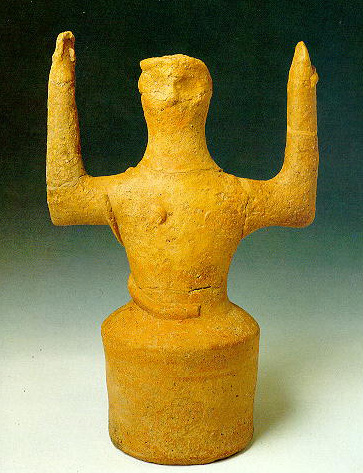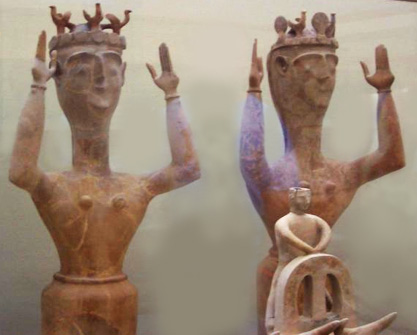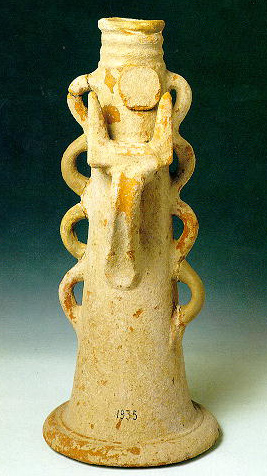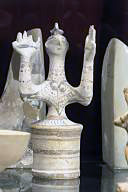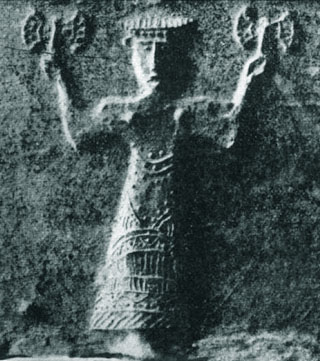Goddess Shrines
after the Mycenaean conquest of Crete
Goddesses were placed on benchlike altars and offerings were made
to them on ceramic ritual stands known as "snake tubes." Gournia, Crete.
The goddesses are crowned with tiaras bearing various symbols, the most common being birds or snakes. Discs and oval-shaped "palettes" also appear.
Birds flank the horns of consecration on the crown of this goddess.
Like many others she was painted red, and so were
the offering stands for these goddesses.
Snake tube from Gournia. The name comes from the coiling snakelike handles on two sides of the offering stand. Bowls were placed on top for libation, food offerings, or incense.
Goddess with huge upraised hands, bell-skirt, and bird on head.
This one is painted with black patterns.Goddess holding double axes that look like butterflies.
Stone relief from Palaikastro,Crete, from period of Mycenaean domination.
